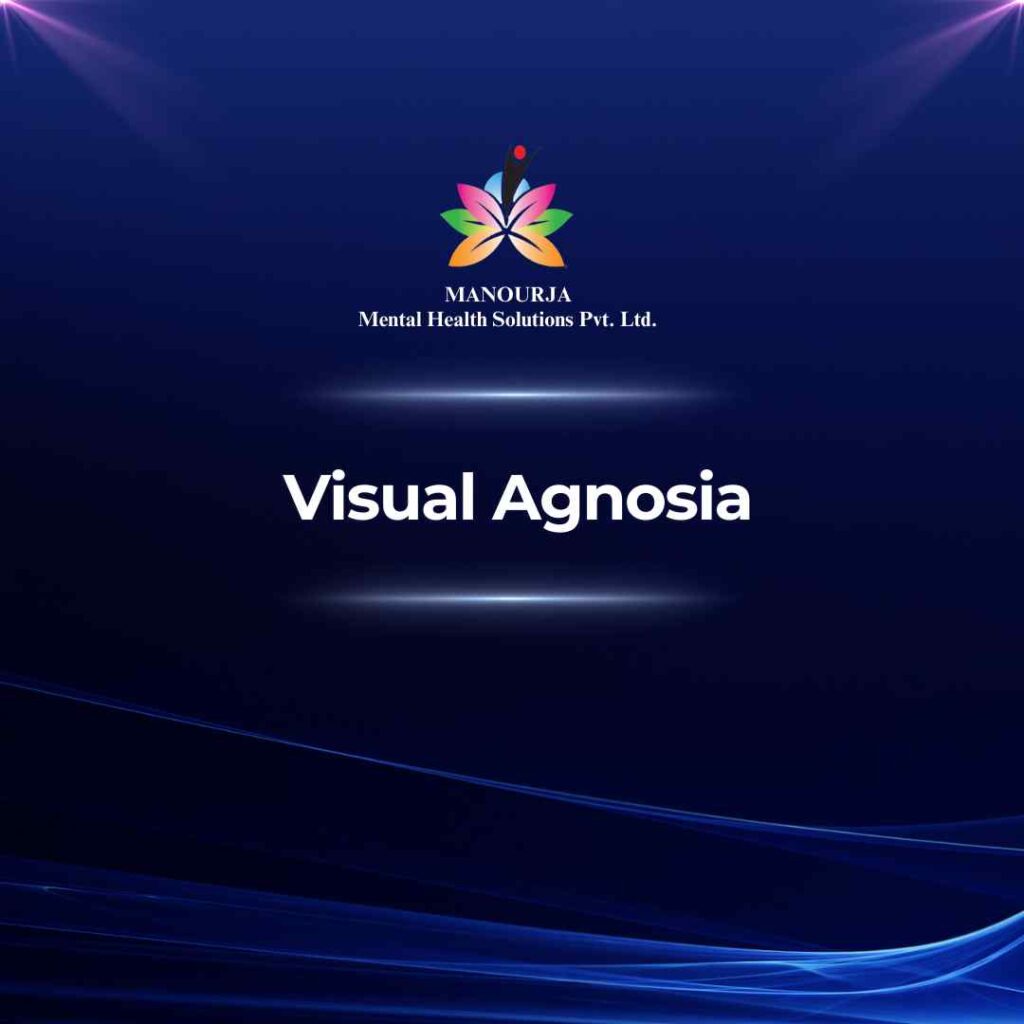Visual Agnosia

“Visual agnosia” is a neurological condition where an individual has difficulty recognizing or identifying objects, even though their vision is otherwise intact. It is not typically considered a sign or symptom of mental illness but rather a perceptual disorder related to brain dysfunction. Here’s a description of visual agnosia and its contexts:
Visual agnosia is a condition characterized by the inability to recognize familiar objects, faces, or visual stimuli, despite having normal vision (i.e., no significant damage to the eyes themselves). People with visual agnosia may see objects clearly but cannot identify or understand what they are seeing. This condition is usually caused by damage to specific areas of the brain responsible for visual processing and recognition.
Signs and Symptoms of Visual Agnosia
- Object Recognition Deficit: Individuals with visual agnosia struggle to identify objects or pictures, even if they can describe their features or use them functionally.
- Selective Impairment: The impairment is selective, meaning it can affect specific categories of objects (e.g., faces, animals, tools) while leaving others relatively intact.
- Preserved Vision: Vision itself, including acuity and color perception, remains intact. The issue lies in the interpretation and recognition of visual stimuli.
Conditions Associated with Visual Agnosia
Visual agnosia is primarily associated with neurological conditions rather than mental illnesses. These conditions include:
- Stroke: Damage to certain areas of the brain, such as the occipital or temporal lobes, due to stroke can lead to visual agnosia.
- Alzheimer’s Disease and Other Dementias: In later stages of Alzheimer’s disease and some other dementias, visual agnosia can develop as part of broader cognitive impairments.
- Traumatic Brain Injury: Severe head trauma can damage brain regions involved in visual processing, potentially leading to visual agnosia among other cognitive deficits.
- Cortical Blindness: This condition, where the brain cannot interpret visual information despite intact eyesight, can also lead to forms of visual agnosia.
Treatment and Management
Treatment for visual agnosia focuses on strategies to compensate for the impairment rather than correcting the underlying brain damage, which may include:
- Visual Aids: Using cues or labels to help identify objects or pictures.
- Environmental Modifications: Simplifying surroundings to reduce confusion and enhance recognition.
- Therapy: Occupational therapy or visual rehabilitation programs to improve adaptive strategies.
Visual agnosia highlights the intricate relationship between brain function and perception, illustrating how specific brain areas are crucial for visual recognition. Understanding these conditions helps in providing appropriate support and rehabilitation for affected individuals.
At MANOURJA, we believe in the transformative power of counseling. Our experienced therapists offer a safe and supportive space where you can explore your thoughts, emotions, and challenges. Through personalized counselling sessions, we’ll work together to develop coping strategies, build resilience, and achieve lasting positive change. Discover the path to a healthier, happier you with MANOURJA counselling services.
MANOURJA Rehabilitation Services
At MANOURJA, we’re dedicated to helping you in rebuild your life, after difficult times. Our rehabilitation services focus on understanding what you need to move forward, whether you’re recovering from addiction, trauma, or any psychological – social challenges. We create personalized plans, that are all about helping you, regain your strength and find hope again. With a caring team by your side, you’ll have the support to make real progress and take steps toward a brighter, healthier future.
